The ancient Biblical sanctuary and its services (Exodus chapters 25-27) reveal profound lessons for us today. Seventh-day Adventists believe these Old Testament services are a representation of the work Christ does for our salvation. The construction and arrangement of the earthly sanctuary is a model of the heavenly sanctuary (Hebrews 8:1-5).
After His death and resurrection, Jesus returned to Heaven. He promised that He went to “prepare a place” for us (John 14:3, NKJV). The ancient tabernacle and its services show us how Jesus is working to prepare us for our heavenly home.
We’ll look at:
- The significance of the Sanctuary
- The appearance and arrangement of the Sanctuary
- The Day of Atonement
- The relationship between the Heavenly Sanctuary and earthly Sanctuary
- The Old-Testament sacrifices performed at the earthly sanctuary
- What changed after Jesus died on the Cross
- What is the “cleansing of the Sanctuary”
- Jesus ministry in the Heavenly Sanctuary
Belief 24: Christ’s ministry in the Heavenly Sanctuary
There is a sanctuary in heaven, the true tabernacle that the Lord set up and not humans. In it Christ ministers on our behalf, making available to believers the benefits of His atoning sacrifice offered once for all on the cross. At His ascension, He was inaugurated as our great High Priest and, began His intercessory ministry, which was typified by the work of the high priest in the holy place of the earthly sanctuary. In 1844, at the end of the prophetic period of 2300 days, He entered the second and last phase of His atoning ministry, which was typified by the work of the high priest in the most holy place of the earthly sanctuary. It is a work of investigative judgment which is part of the ultimate disposition of all sin, typified by the cleansing of the ancient Hebrew sanctuary on the Day of Atonement. In that typical service the sanctuary was cleansed with the blood of animal sacrifices, but the heavenly things are purified with the perfect sacrifice of the blood of Jesus. The investigative judgment reveals to heavenly intelligences who among the dead are asleep in Christ and therefore, in Him, are deemed worthy to have part in the first resurrection. It also makes manifest who among the living are abiding in Christ, keeping the commandments of God and the faith of Jesus, and in Him, therefore, are ready for translation into His everlasting kingdom. This judgment vindicates the justice of God in saving those who believe in Jesus. It declares that those who have remained loyal to God shall receive the kingdom. The completion of this ministry of Christ will mark the close of human probation before the Second Advent. (Lev. 16; Num. 14:34; Ezek. 4:6; Dan. 7:9-27; 8:13, 14; 9:24-27; Heb. 1:3; 2:16, 17; 4:14-16; 8:1-5; 9:11-28; 10:19-22; Rev. 8:3-5; 11:19; 14:6, 7; 20:12; 14:12; 22:11, 12.)

What was the Significance of the Biblical Sanctuary?
For thousands of years, the Sanctuary and its services was the focus of the Israelites’ worship experience. Right after their escape from Egyptian slavery, God told Moses,
“Let them make Me a sanctuary, that I may dwell among them” (Exodus 25:8, NKJV).
At this sanctuary, there were morning and evening sacrifices (Numbers 28:4).
The sanctuary was the center of the yearly feasts (Leviticus 23).
All were invited to come and offer personal sacrifices for their sin (Leviticus 4). Each service reminded the people of a coming Redeemer.
This sanctuary, or the tabernacle, was their “church” in the desert during their journey from Egypt to Canaan. God had a very specific plan for the building.
“According to all that I show you, that is, the pattern of the tabernacle and the pattern of all its furnishings, just so you shall make it,” (Exodus 25:9, NKJV).
Once they settled, they built a permanent structure. King Solomon built the first stately temple.
“I propose to build a house for the name of the Lord my God,” (1 Kings 5:5, NKJV).
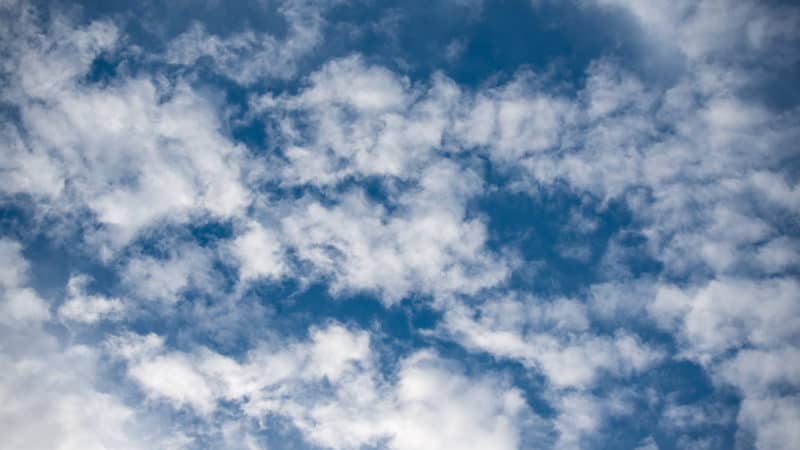
Is there a Sanctuary in Heaven?
Yes. The earthly sanctuary was made like the heavenly sanctuary. The Bible tells us that this heavenly sanctuary is one that “the Lord pitched, and not man” (Hebrews 8:2, KJV).
The earthly sanctuary was a “copy and shadow of the heavenly things” (Hebrews 8:5, NKJV). It was modeled after the heavenly sanctuary, which was shown to Moses, so we could learn about what happens in Heaven.
“For Christ has entered, not into holy places made with hands, which are copies of true things, but into heaven itself, now to appear in the presence of God on our behalf” (Hebrews 9:24, ESV).
The earthly sanctuary service symbolizes the ministry of Jesus in the heavenly Sanctuary. And the various elements pointed forward to the amazing gift of Jesus Christ.
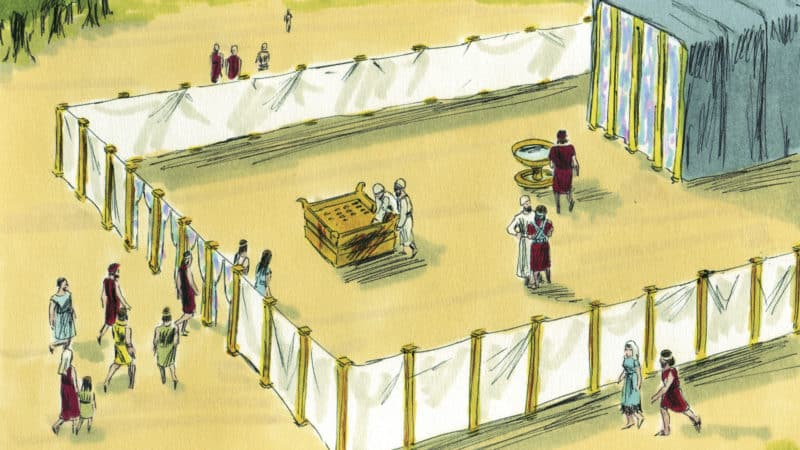
What did the earthly Sanctuary look like?
In your mind’s eye, walk to the entrance of the ancient Hebrew sanctuary. This tour is guided by the descriptions we find in Exodus chapters 25-27.
A fence separates the Sanctuary from the rest of the camp. Walk through the open gate and come into the courtyard. Every article of furniture, every service, every detail about the Sanctuary, bears symbolism of Jesus’ ministry for us, for He is “the way, the truth and the life” (John 14:6).
The first thing you notice in the courtyard is the Altar of Burnt Offering. This is where the morning and evening sacrifice is offered. This is the place you bring a lamb and sacrifice it for your sins.
All these sacrifices point forward to Jesus, the perfect Lamb.
This symbolism is reinforced in the New Testament, when John the Baptist saw Jesus and said, “Behold! The Lamb of God who takes away the sin of the world!” (John 1:29, NKJV).
In Christ’s redeeming ministry, He offers His blood for our forgiveness and cleansing.
If you look a little further in the courtyard, you’ll see the Laver. This is a huge basin of water, used for the cleansing and purification of the priests.
Throughout the Bible, water is used as a symbol for life and for purity. Jesus offers a “fountain of water springing up into everlasting life” (John 4:14, NKJV), and He promises, “He who believes in Me shall never thirst” (John 6:35, NKJV).
Jesus’ ministry offers us cleansing, healing, and hope through the waters of baptism. Just like the psalmist prayed, “Wash me thoroughly from my iniquity, and cleanse me from my sin” (Psalm 51:2. NKJV).

Next you will see a curtain-covered building. This is the two-compartment sanctuary, the Holy Place and the Most Holy Place. If the veil could be pulled aside, you would see the inside. This is a place that only priests can enter.
In the Holy Place,here are three pieces of furniture. The Table of Shewbread had two stacks of bread, with six loaves in each stack. This bread was made new each week.
“I am the bread of life,” Jesus told His disciples. “He who comes to Me shall never hunger” (John 6:35, NKJV).
Christ’s ministry gives us the “bread of life” through His Word.
“Man shall not live by bread alone, but by every word that proceeds from the mouth of God” (Matthew 4:4, NKJV).
The second piece of furniture is the Golden Candlestick. There are seven lights on this candlestick, which are always filled with oil for burning.
“I am the light of the world,” Jesus declared. “He who follows Me shall not walk in darkness” (John 8:12, NKJV).
Jesus promises to guide us in His ways. His ministry brings joy and hope to us, and His light can shine through us to give light to others.
“Let your light so shine before men, that they may see your good works and glorify your Father in heaven” (Matthew 5:16, NKJV).
The Altar of Incense is close to the veil which separates this room from the Most Holy Place. Incense is burned on this altar and it fills the sanctuary with fragrance.
“Let my prayer be set before You as incense,” (Psalm 141:2, NKJV) prays David the psalmist.
As our prayers rise to heaven, Jesus hears them and relays them to the Father, interceding for us (Hebrews 7:25).
Christ’s ministry enlightens our understanding as we talk with Him through prayer. We can have faith that He hears the prayers of our hearts and tends to them.
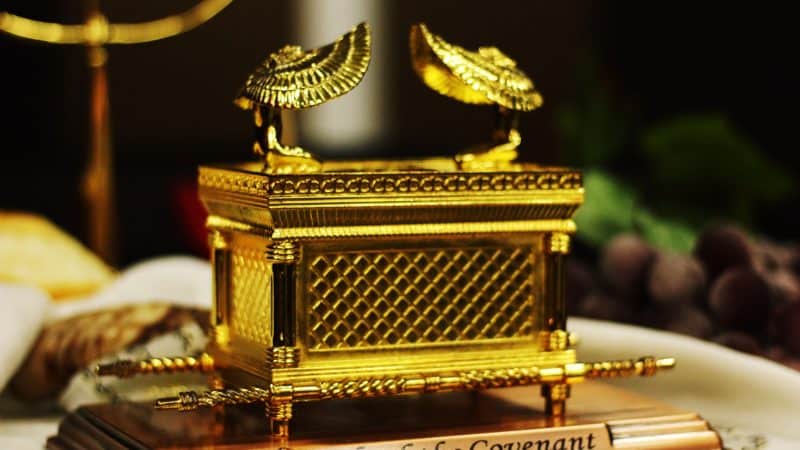
Stepping through the veil, you would find yourself in the most sacred part of the tabernacle: the Most Holy Place. There is only one piece of furniture in this small room: the Ark of the Covenant, or the ark of Testimony. The first thing to catch your eye will likely be the two angels of gold on top of it, looking down from either side of the ark. Their wings spread over this sacred box.
Inside the ark are two tablets of stone containing God’s law, or the Ten Commandments. The law shows us God’s will and helps us to realize how much we need Him.
“The law of the Lord is perfect, converting the soul. … The commandment of the Lord is pure, enlightening the eyes” (Psalm 19:7, 8, NKJV).
Jesus’ ministry in the heavenly Sanctuary gives us wisdom to see why humanity needs a foundational law that tells us what is right and what is wrong.
Inside the ark is a pot of manna, the food God rained down from Heaven to feed the Israelites in the wilderness. This is a reminder of how God promises to take care of us, even when our situations seem impossible.
“My God shall supply all your needs according to His riches in glory by Christ Jesus” (Philippians 4:19, NKJV).
In the ark is Aaron’s rod that miraculously flowered when the tribes questioned who God had chosen to work for Him as priests (Numbers 17:8-10). We can think of this whenever we question who is on our side. We can also remember the words of David: “The Lord is on my side; I will not fear. What can man do to me?” (Psalm 118:6).
God promised that the Ark of the Covenant was where His presence would be. “And there I will meet with you,” God told Moses. “And I will speak with you from above the mercy seat, from between the two cherubim which are on the ark of the Testimony” (Exodus 25:22, NKJV).
Only the High Priest could come into the Most Holy Place where God’s presence was. This happened once each year, on the Day of Atonement.

What was the Day of Atonement?
The Day of Atonement was a special occasion to “make atonement for the Holy Sanctuary” (Leviticus 16:33, NKJV).
All year long, the sins of the people were symbolically transferred to the sanctuary through the blood of animals.
By means of blood manipulation the sins of God’s people contaminated the tabernacle.
All year long, this sin-filled blood polluted the tabernacle.
But on the Day of Atonement, these sins were cleaned out of the sanctuary.
On this day, two goats were chosen for a special work. The first goat was offered as a sacrifice. No sins were confessed over this animal. His blood was used for cleansing.
“Then he shall kill the goat of the sin offering, which is for the people, bring its blood inside the veil, … and sprinkle it on the mercy seat and before the mercy seat” (Leviticus 16:15, NKJV).
The High Priest brought this blood into the Most Holy Place.
“He shall make atonement for the Holy Place, because of the uncleanness of the children of Israel, and because of their transgressions, for all their sins” (Leviticus 16:16, NKJV).
Before the High Priest did this, there was time for the congregation to think about their lives and express to God that they were sorry for their sins.
“It is a sabbath of solemn rest for you, and you shall afflict your souls” (Leviticus 16:31, NKJV).

It was important that they confessed their sins so that they could stay in tune with God and not be attached to their sin anymore.
The High Priest asked God to forgive all the combined sins that had been transferred to the sanctuary. While he was interceding in the Most Holy Place, the congregation fasted and prayed. It was a solemn day.
“On that day the priest shall make atonement for you, to cleanse you, that you may be clean from all your sins before the Lord” (Leviticus 16:30, NKJV).
Next is where the second goat came into play as the “scapegoat.”
When the High Priest came out of the sanctuary, he symbolically carried all the sins that had been confessed during the past year of temple services. He went directly to the scapegoat and symbolically transferred those sins to this animal.
“He shall lay both his hands on the head of the live goat, confess over it all the iniquities of the children of Israel, and all their transgressions” (Leviticus 16:21, NKJV).
Then this scapegoat was led out into the wilderness. Since it bore the sins of the congregation, it was separated from the congregation.
Sin causes separation.
“Your iniquities have separated you from your God,” (Isaiah 59:2, NKJV).
God’s purpose in the plan of salvation is to remove the separation between our hearts and His love. His ultimate plan is to restore us to communion with Him. He looks forward to the day when we won’t be separated anymore and He will take us to live with Him in Heaven.
Want to learn more about the plan of salvation? Sign up for an online Bible study today.
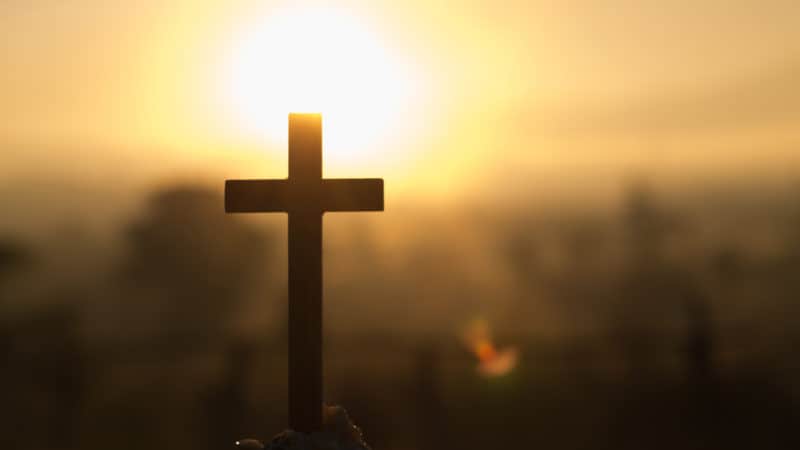
Today, animal sacrifices are no longer necessary
When Jesus Christ came to earth, He put an end to the need for animal sacrifices. They symbolized the death of Jesus, taking on the consequences of sin for us and allowing us to be redeemed, should we so choose.
So after He died for us on the Cross, “We have been sanctified through the offering of the body of Jesus Christ once for all” (Hebrews 10:10, NKJV).
It was on a Friday long ago that animal sacrifices became no longer necessary. Type (the symbols that pointed to Jesus) met its Antitype (Jesus, the One true Sacrifice who would forever answer the question of man’s salvation).
Imagine the scene on that Friday:
An eerie twilight envelops the temple courtyard, leading into a three-hour unearthly darkness. It is the time of evening sacrifice.
As the priest begins preparations to slay an innocent lamb, the earth starts to convulse. Suddenly, the inner veil of the temple tears (Mark 15:38). An unseen hand rips it from top to bottom (Matthew 27:51).
The priest’s concentration is distracted. The Most Holy place of the man-made tabernacle is no longer the only place that is holy. No longer will it be used to point forward to the story of Jesus’ sacrifice.
“It is finished!” strained the exhausted Man hanging on a cross between two thieves.
“And bowing His head, He gave up His spirit” (John 19:30, NKJV).
As a witness to all these events, the Roman centurion cried, “Truly this Man was the Son of God!” (Mark 15:39, NKJV).
In His death, the Redeemer fulfilled His mission. There was no longer a need to offer animal sacrifices, as the event they pointed our minds toward had happened. Jesus, the Lamb of God, gave His life—His blood—as the ultimate sacrifice.
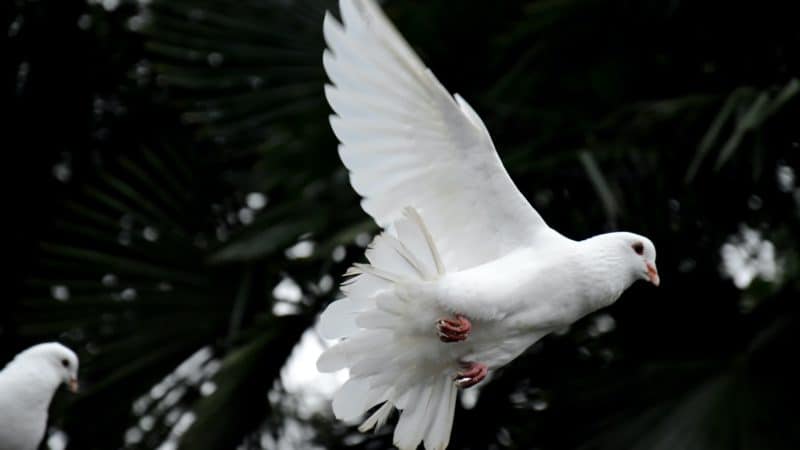
Jesus is resurrected, then returns to heaven
In Heaven is where Jesus presented His atoning sacrifice.
“It is Christ who died, and furthermore is also risen, who is even at the right hand of God, who also makes intercession for us” (Romans 8:34, NKJV).
His sacrifice was the reason He could redeem humanity. And before Jesus left this earth, He promised to send His disciples help.
“It is to your advantage that I go away,” Jesus said. “If I do not go away, the Helper will not come to you; but if I depart, I will send Him to you” (John 16:7, NKJV).
“When He, the Spirit of truth, has come, He will guide you into all truth,” (John 16:13, NKJV) Jesus promised.
Forty days after His resurrection, Jesus returned to Heaven. His disciples stood together, looking after their beloved leader. Suddenly, they noticed two men in white apparel.
“Men of Galilee,” one of the men said, “Why do you stand gazing up into heaven? This same Jesus, who was taken up from you into heaven, will so come in like manner as you saw Him go into heaven” (Acts 1:11, NKJV).
The disciples took heart at these words. Jesus ascended to heaven, gave us the gift of the Holy Spirit (“the Helper”) to guide us, and then began His ministry in the heavenly Sanctuary.

What has Jesus done since returning to Heaven?
Since returning to Heaven, Jesus serves as our Advocate and Intercessor. He stands between us and Satan, and also connects us directly to the Father.
“We have an Advocate with the Father, Jesus Christ the righteous” (1 John 2:1, NKJV).
Jesus’ life, death, and resurrection opened the way for communication with Heaven.
As our prayers ascend to heaven, Jesus intercedes for us. To intercede means to plead on someone else’s behalf. Jesus offers His life and death to pay the price for our sins.
“Therefore, He is able to save completely those who come to God through Him, since He always lives to intercede for them” (Hebrews 7:25, CSB).
“The wages of sin is death, but the gift of God is eternal life through Christ Jesus our Lord” (Romans 6:23, KJV).
This intercessory ministry of Christ Jesus our Lord is what makes our salvation possible.
Because of our sin, we deserve to die. However, Jesus’ ministry of intercession gives us the opportunity to experience salvation.
When we ask for forgiveness, Jesus applies His blood to cover our sinful past. He pleads His own perfect record as a reason why our sins can be forgiven.
“With His own blood He entered the Most Holy Place once for all, having obtained eternal redemption” (Hebrews 9:12, NKJV).
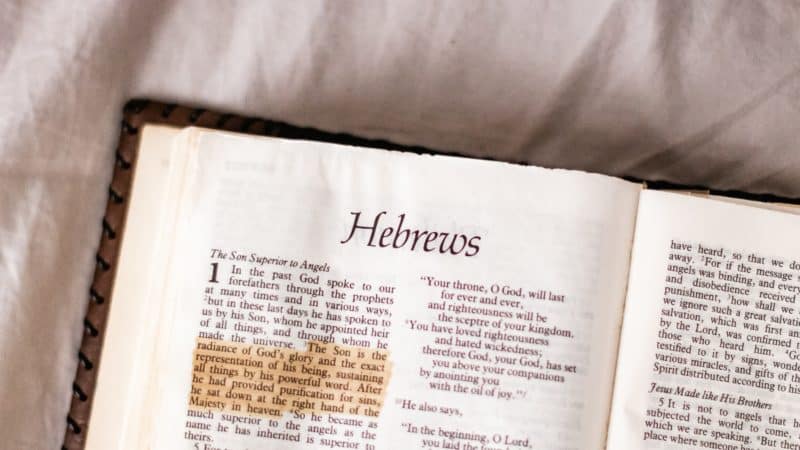
Is Jesus also the High Priest in the heavenly Sanctuary?
Jesus, the Lamb of God, also has another important role in our salvation. He is now our High Priest in the heavenly sanctuary.
“We have a great High Priest who has passed through the heavens, Jesus the Son of God” (Hebrews 4:14, NKJV).
A priest is someone who mediates within a spiritual role. Priests are also “set apart” from others to perform holy tasks, maintaining a strong relationship with God.
Priests in the Old Testament were the ones to conduct the sacrificial rituals with the animals. Today, Jesus is the One who performed the ultimate sacrificial task when He laid down His life for us. The sacrifice is done, and He remains our High Priest.
And Jesus was meant for this role.
“For we do not have a High Priest who cannot sympathize with our weaknesses, but One who has been tempted in all things just as we are, yet without sin” (Hebrews 4:15, NASB).
Our High Priest understands exactly what it’s like for you to struggle with temptation.
When Jesus Christ came to earth, Satan tempted him. Right after His baptism, “Jesus was led up by the Spirit into the wilderness to be tempted by the devil” (Matthew 4:1, NKJV).
Through Jesus’ connection with the Father and His knowledge of Scripture, He met every temptation with a Bible answer (Matthew 4:4, 7, 10).
Even before that, Jesus was often confronted with temptation. In every circumstance, however, Jesus chose to follow His Father’s will. He gave us a perfect example of how we can overcome temptation through His strength.
God knows exactly what you’re going through. He knows the sins that are especially hard for you. He has endured difficult temptations. He understands the struggle.
We can come to Him with confidence, knowing He will help us. Which is why the passage in Hebrews continues,
“Let us therefore come boldly to the throne of grace, that we may obtain mercy and find grace to help in time of need” (Hebrews 4:16, NKJV).

If Christ’s sacrifice was enough, what is left to do in the heavenly Sanctuary?
In the earthly tabernacle, after the lamb was slain, its blood was sprinkled on the wall of the sanctuary. This symbolically transferred the sin from the sinner to the sanctuary.
The sinner was free and forgiven, but their sin was still in the sanctuary.
And just like the earthly service had a yearly Day of Atonement to clean sin out of the sanctuary, the heavenly Sanctuary will also have a time of purification.
The heavenly Sanctuary must also be cleansed.
What does it mean to cleanse the Sanctuary?
In Heaven, a record is kept of every person’s life. These records are what will be studied during the judgment.
“For God will bring every work into judgment, including every secret thing, whether good or evil” (Ecclesiastes 12:14, NKJV).
These records chronicle everything we have ever done.
When we ask for forgiveness, Jesus “is faithful and just to forgive us our sins and to cleanse us from all unrighteousness (1 John 1:9, NKJV).
And though Jesus is delighted to forgive our sins, He also has the responsibility of getting rid of them.
To illustrate this, let’s again look back at the Day of Atonement rituals in the earthly Sanctuary. Remember, there were two goats involved in the earthly Day of Atonement ritual.
The first goat served the sacrificial death, as a substitute for the sinner, “for it is the blood that makes atonement by the life” (Leviticus 17:11, ESV). This represented Jesus, as He was innocent, and it is His blood that cleanses us.
The second goat, the scapegoat, bore the blame of the sins because it symbolized the ultimate author sin. The wickedness of all Israel’s sin was symbolically transferred to that goat and it was banished and set loose into the wilderness (Leviticus 16:20-22) thus removing the sins from the Israelite camp, Similarly, eventually Satan will be banished during the Millennium.
Just like the yearly Day of Atonement was to cleanse the earthly Sanctuary, the Heavenly sanctuary also needs to be cleansed.
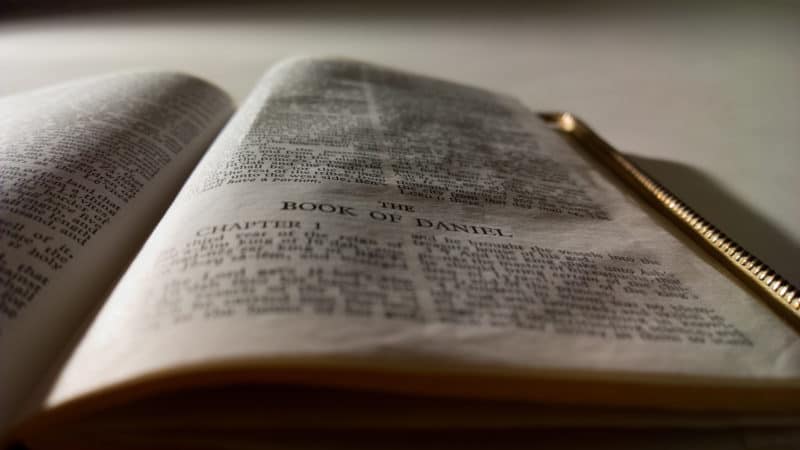
When is the heavenly Sanctuary cleansed?
The prophet Daniel was shown the heavenly Sanctuary and its cleansing in a vision from God. During this vision, he saw an overview of future world events. Then he overheard a discussion.
“How long will the vision be?” asks a “holy one” (Daniel 8:13, NKJV).
Another “holy one” answers: “For two thousand three hundred days; then the sanctuary shall be cleansed” (Daniel 8:14, NKJV).
Through the study of this prophecy, Bible scholars found that this time period represents twenty-three hundred years. Daniel 9 shares that the beginning of this prophecy would occur when “the command to restore and build Jerusalem” (Daniel 9:25, NKJV) was given.
This command was given by the King Artaxerxes in B.C. 457. Beginning at this date, the end of the prophecy would be in the year 1844 A.D.
In the 1800s, a group of believers who traced these prophetic lines believed the earth was the sanctuary. They believed the cleansing of the sanctuary would be at the Second Coming of Jesus Christ.
Just as the earthly sanctuary was cleansed on the Day of Atonement, they believed Jesus would return on the Day of Atonement in 1844.
Throughout the Bible, the Day of Atonement was celebrated on “the seventh month, on the tenth day of the month,” (Leviticus 16:29, NKJV).
The Jewish calendar is based on the moon, which is why the seventh month isn’t July. The way we track days, weeks and months today, it would place this day in September or October. In 1844, the Day of Atonement fell on October 22, 1844.
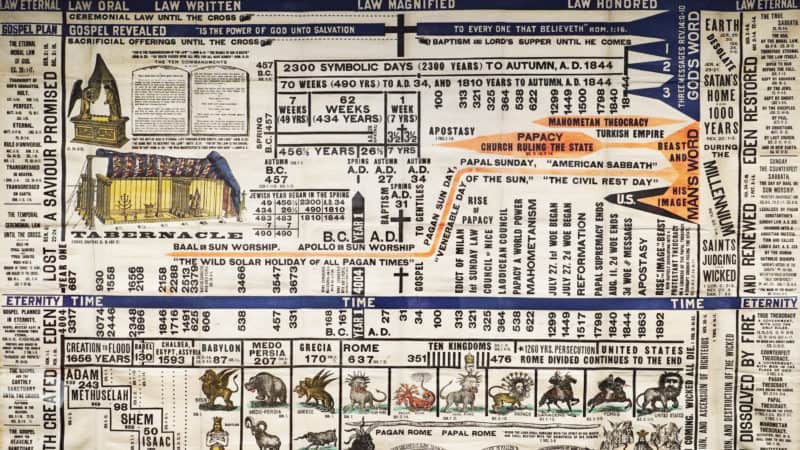
As this message was shared, many sincere people started preparing for Jesus’ soon coming. They were called Advent believers because of their faith in Christ’s literal return. They worked to warn the world of its impending end. As the day of October 22, 1844 dawned, the hope of the Advent believers was palpable.
Imagine the deep disappointment when the glorious event didn’t happen.
However, through more prayer and Bible study, it was found the Bible didn’t teach that the earth was the sanctuary. God had a heavenly Sanctuary. The ancient Hebrew sanctuary was a copy of the original.
Instead of returning to earth on the Day of Atonement, God began this process in the Most Holy Place. He began the work of cleansing the heavenly sanctuary.
Just as animal sacrifices were a type of the antitype of Jesus’ sacrifice, the earthly Day of Atonement was the type while the cleansing of the Heavenly Sanctuary was the antitype. This cleansing would not be completed in a day, or even a year. This cleansing would continue until sin would be forever destroyed.
The heavenly sanctuary is contaminated with the records of our sin. Jesus, as our High Priest, enters the Most Holy Place to begin the cleaning process. His sinless life is enough to cover the sins of every person who has ever lived.
However, there must be a time of investigation: Whose sins does He need to cover? Who has made the decision to accept His gift of forgiveness? Who has committed their life to Him?
Judgment and the Day of Atonement in heaven
In 1844, the ministry of Jesus expanded to begin the process of the judgment. Not only is He available to forgive sins and to intercede on our behalf. Now He is working with His Father to see who has decided to let Him be their Savior and Lord.
Jesus, as our High Priest, and our Advocate, participates in the judgment. The case of each person is decided. Jesus is on hand to plead for us. Because of His sacrifice, He asks for our salvation.
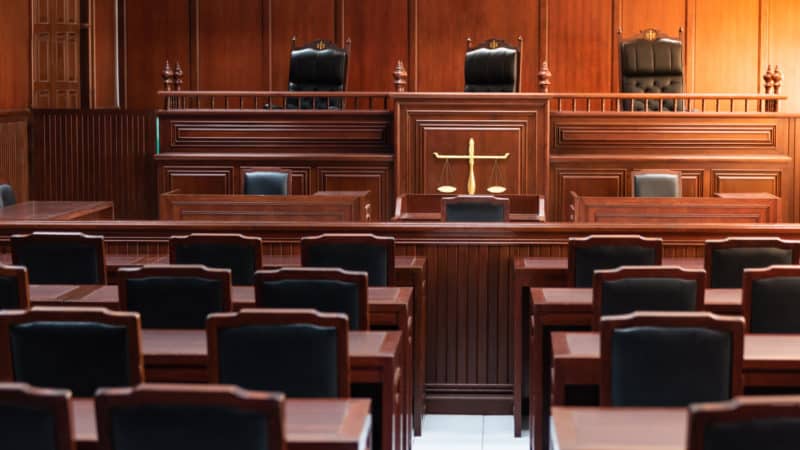
What does the judgment in the heavenly Sanctuary look Like?
We can picture the heavenly judgment much like an earthly courtroom scene.
Daniel, when seeing the judgment in vision says,
“I watched till thrones were put in place, and the Ancient of Days was seated” (Daniel 7:9, NKJV).
“A thousand thousands ministered to Him; ten thousand times ten thousand stood before Him. The court was seated, and the books were opened” (Daniel 7:10, NKJV).
Imagine the impressive scene: God the Father, seated on His throne. Tens of thousands of angels surround this throne.
On one side of the courtroom, we see Jesus—our High Priest, our Advocate, and our Defense Attorney (Job 16:19; 1 John 2:1).
On the other side of the courtroom, we see Satan. He is God’s adversary. The Bible calls him the “accuser of our brethren” (Revelation 12:10, NKJV).
He acts as the prosecuting attorney. He argues that all men have sinned and that they all belong to him. Revelation says he has “accused them before our God day and night” (Revelation 12:10, NKJV).
As the books of record are reviewed, the case of every person is decided.
Imagine your case coming up. Imagine yourself standing in the middle of this courtroom, under scrutiny.
Zechariah also talks about this courtroom scene.
Joshua, a high priest, is “standing before the Angel of the Lord.” Satan is “at his right hand to oppose him” (Zechariah 3:1, NKJV).
Joshua looks down and realizes he is “clothed with filthy garments” (Zechariah 3:3, NKJV). This is not the outfit he wants to be wearing when he meets with the Angel of the Lord! This is not how he wants to present himself for the trial of his life.

As he stands there, embarrassed, Satan begins to accuse him. His past sins come up as a reason why he shouldn’t be accepted by God.
Then a voice rings out over the courtroom. “The Lord rebuke you, Satan!” (Zechariah 3:2, NKJV).
The Lord, the righteous Judge, looks at Joshua.
“Take away the filthy garments from him,” (Zechariah 3:4, NKJV).
Looking at Joshua, the Lord says, “See I have removed your iniquity from you.” He continues, “I will clothe you with rich robes” (Zechariah 3:4, NKJV).
Just like Joshua, we come to the judgment in dirty clothes. The prophet Isaiah writes, “All our righteousnesses are like filthy rags” (Isaiah 64:6, NKJV).
The exciting news is that Jesus offers to give us His own rich robes. His righteous life will cover us and make us worthy to be saved. When we surrender to Him, He will guide our case through the judgment.
He is the Lamb of God, who uses His blood to cover our sins. He is our High Priest, who works with His Father to decide each case.
He is on our side! He wants each one of us to be saved from sin. He wants us to live with Him in heaven for eternity. He promises,
“He who overcomes shall be clothed in white garments, and I will not blot out his name from the Book of Life; but I will confess his name before My Father and before His angels” (Revelation 3:5, NKJV).
Our part is to accept His gift, and to commit our life to His leading. He rejoices to save us!
We don’t need to fear the judgment with Jesus by our side.
“The Lord thy God in the midst of thee is mighty; He will save, He will rejoice over thee with joy; He will rest in His love, He will joy over thee with singing.” (Zephaniah 3:17, KJV).
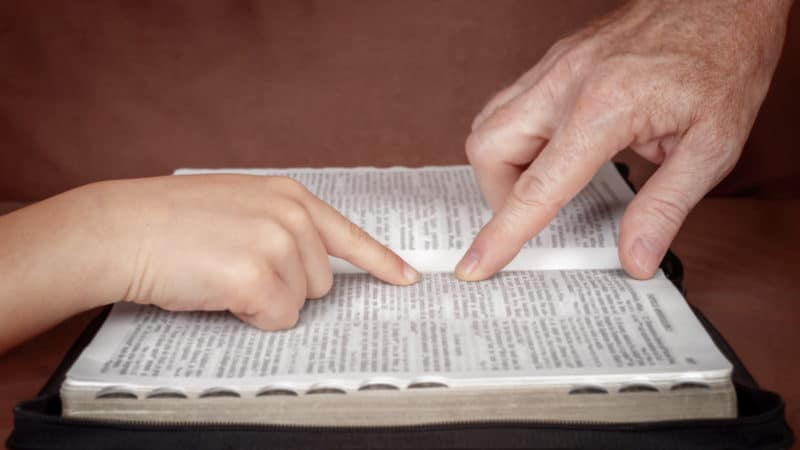
When Does Jesus’ Ministry in the Sanctuary End?
After all the cases have been decided, Jesus says, “I am coming quickly, and My reward is with Me, to give to every one according to his work” (Revelation 22:12, NKJV).
Soon the words will be spoken, “He who is unjust, let him be unjust still; he who is filthy, let him be filthy still; he who is righteous, let him be righteous still; he who is holy, let him be holy still” (Revelation 22:11, NKJV).
Once Jesus speaks these words, the case of every person will have been decided. He’ll have finished His work of intercession. The last sin has been blotted out. The heavenly sanctuary has been cleansed of sin.
He and His Father have completed the judgment. The case of each person has been decided—those who are for and those who are against God. As much as His heart of love wants to save every person, He respects the choices each person has made.
Then, after the cleansing of the heavenly Sanctuary, Jesus will return to earth.
All those who have chosen to accept His gift of salvation will join Him and His angels in the air, ready to go to heaven.
“For the Lord Himself will descend from heaven with a shout, with the voice of an archangel, and with the trumpet of God. And the dead in Christ will rise first. Then we who are alive and remain shall be caught up together with them in the clouds to meet the Lord in the air. And thus we shall always be with the Lord” (1 Thessalonians 4:16, 17, NKJV).
Right now, Jesus lingers in the heavenly sanctuary. He is ready to forgive our sins as soon as we are ready to confess. He is ready to credit the price He paid to our account.
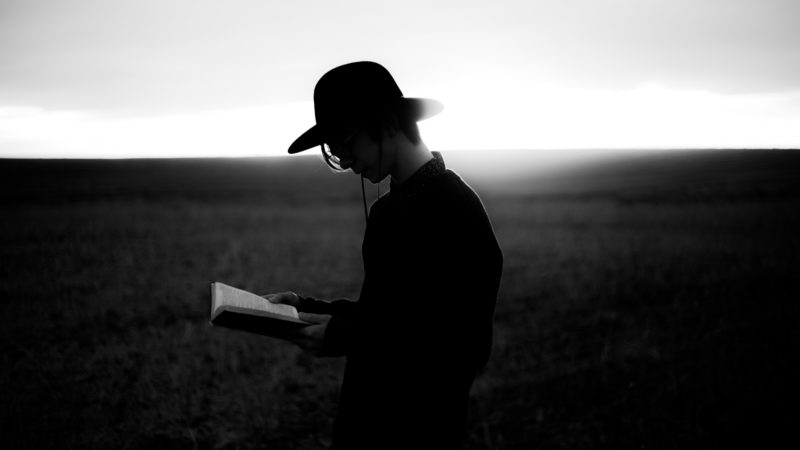
What happens to the sins in the heavenly Sanctuary? Is there a scapegoat?
This is when God will blot out the records of the sins of those who have been forgiven.
“I, even I, am He who blots out your transgressions for My own sake; And I will not remember your sins” (Isaiah 43:25, NKJV).
Those who have confessed their sins will have their sins buried forever. God pleads with us, “repent therefore and be converted, that your sins may be blotted out” (Acts 3:19, NKJV).
If we have accepted His gift, and chosen to follow His way, His blood will cover our sins (1 John 1:7, NKJV).
Our part is to accept His sacrifice, confess our sins, and to claim His power to walk in “newness of life” (Romans 6:4, NKJV).
In the earthly Day of Atonement service, there was a scapegoat (Leviticus 16). This animal symbolically received the sins from the sanctuary and carried them into the wilderness.
In the final cleansing of sin from the universe, there will be a final scapegoat. Satan, the arch-deceiver, will bear the sins of the righteous. When the sanctuary in Heaven is cleansed, those sins will be transferred to Satan.
In Revelation, it speaks of an angel who will lay “hold of the dragon, that serpent of old, who is the Devil and Satan, and bind him for a thousand years” (Revelation 20:2, NKJV).
Satan will have one thousand years to think about all the sins he tempted God’s people to commit. He will have one thousand years to realize the enormity of the consequences of sin.
At the end of that time, Satan and the unrighteous who did not accept God’s atoning gift of salvation will be destroyed. This is called God’s “strange act” (Isaiah 28:21, KJV).
God is “not willing that any should perish,” but longs that “all should come to repentance (2 Peter 3:9, NKJV). He longs to save all of humanity. Jesus’ sacrifice is powerful enough to save every single person. But He respects each person’s freedom of choice.
Once Christ finishes his intercessory ministry, the eternal destiny of every person will be decided. Then the sanctuary in Heaven will be cleansed. The earth will be purified from sin.
God promises, “He will make an utter end of it. Affliction will not rise up a second time” (Nahum 1:9, NKJV).

What the message of the Sanctuary means for us today
Seventh-day Adventist Christians rejoice in the knowledge that Jesus Christ is working for us each and every moment, as our Intercessor and our Advocate.
The Biblical truth that Jesus is our “great High Priest,” (Hebrews 4:14-15) interceding in Heaven for us (Hebrews 7:25), shaped the early experience of the Adventist believers.
To know that Jesus lives to make intercession for us can give us hope that we will not be lost if we choose Him. We can have assurance of Salvation if our eyes are on Jesus.
We can also have courage, knowing that Jesus was “tempted in every way” (Heb 4:15 NIV). With Him as our High Priest, He will always understand what we’re going through.
This kind of peace, that comes from faith in Jesus and His ministry toward us, can have a transformative effect on our lives. What a beautiful story of unconditional love.
Ready to start Bible studies and discover Scripture for yourself?
Wish to learn more about Jesus’ ministry in the heavenly sanctuary and its significance for us today? Check out our Bible studies.


Recognizing Heavenly Realities
One of the most meaningful themes of Scripture is the sanctuary. From a historical view, it flows fr…
Read More